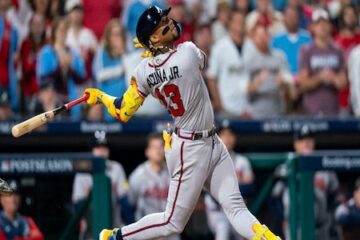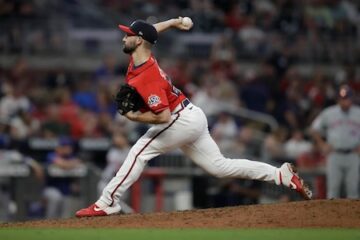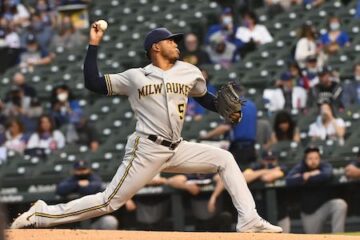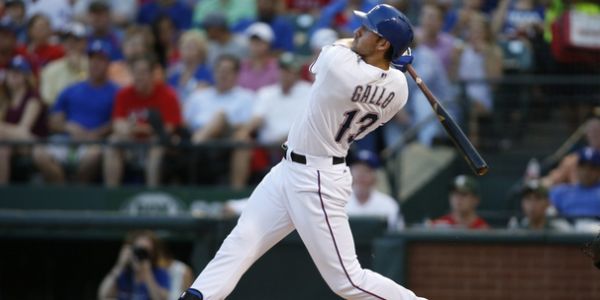2014 Fantasy Baseball: What if Christian Yelich Had More Power?
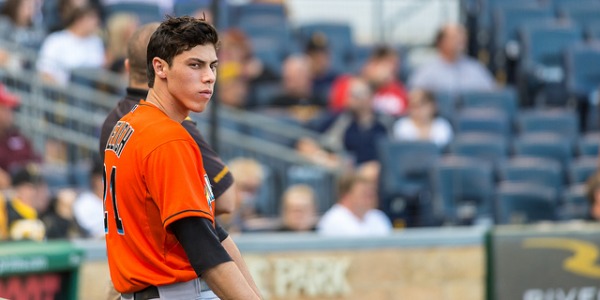

Lost in Giancarlo Stanton’s monstrous year is this: Christian Yelich, a popular breakout pick, has been very good. Back in March, he was one of my favorite targets. He was young, disciplined, had some speed and showed good bat-to-ball skills, allowing solid contact more often (he never pops up!). I was able to land him on multiple teams. And he’s been an asset, no doubt. If you didn’t look at a player rater – which puts Yelich in top 50 territory – you might not think he’s helped you that much, but he has.
He’s only left the yard nine times, while swiping 20 bags. His average and OBP are well above average, though, sitting at .292 and .372, respectively. And he’s thrived by simply being in front of Stanton – who isn’t of this world – crossing the plate nearly 90 times, ranking him in the top 15 in runs scored.
Basically, Yelich has done what many hoped for: provide some power and speed, while helping in whichever rate statistic your league uses. More power is on the way, though, and I believe there is a unique comparison to be made.
| Player | BB% | K% | HR | ISO | Avg. Flyball Dist. | SB |
|---|---|---|---|---|---|---|
| Christian Yelich (2014) | 11.1% | 21.4% | 9 | 0.123 | 287 | 20 |
| Jason Kipnis (2013) | 11.6% | 21.7% | 17 | 0.168 | 287 | 30 |
| Brett Gardner (2014) | 9.2% | 21.3% | 16 | 0.168 | 276 | 20 |
The comparison isn’t perfect, but 2014 is in the bag, so we’re looking at 2015. Yelich could show more power, and this is the most likely scenario, to me, anyways. It’s hard to foresee a huge jump in power, but six of seven more homers? Sure.
| Player | O-Swing% | Z-Swing% | Swing% | O-Contact% | Z-Contact% | Contact% |
|---|---|---|---|---|---|---|
| Yelich (2014) | 21.2% | 56.9% | 38.9% | 60.1% | 89.5% | 81.4% |
| Kipnis (2013) | 20.9% | 54.7% | 38.2% | 58.6% | 90.1% | 81.7% |
| Gardner (2014) | 19.8% | 51.7% | 36.5% | 69.5% | 92.6% | 86.6% |
In a pure plate discipline light the comparison makes a little more sense. None of them swing at poor pitches often. Nor do they swing in the zone much. And more often than not, when they do offer, contact is made, an important distinction. It’s, in some ways, the perfect combination.
It’s important now, when Yelich’s power is middling, but it will be even more important whenever his power develops a little further. Gardner was challenged more this season; he’s forced pitchers to atone for their mistakes. Kipnis, thanks in part to injury, has had a rough go of it in 2014, but his 2013 seems like a reasonable scenario for the young Yelich.
Best of all, Yelich is soon to be entering his power prime, according to aging curves. Take it away, Eno Sarris:
Surprised? That’s a pretty definitive peak for power, and it might be a little earlier than most would think. The fact that ground ball rate bottoms out (peaks) at the same age — 24 — suggests to me that there is a magic age range for power, and it’s earlier than we might have thought.
Perhaps this makes sense from an athleticism standpoint. Bodies may peak earlier than skills. If repetition can improve a batter’s sense of the strike zone and make him a better hitter overall as he approaches 30, he might still be falling off a pure muscle-bound power apex.
Guess how old Yelich will be next year? Twenty-three – one year away from his “peak”; and the age at which groundballs should begin to become less frequent. As of now, the main thing in Yelich’s way is just that: too many groundballs. The only players to hit more groundballs than Yelich this year are: Ben Revere, Derek Jeter, and Norichika Aoki. That’s going to have to change, probably a good deal, in order for Yelich’s power to show through. His flyball distance is fine; he just needs to hit more of them.
Yelich has also seen improved production versus left handed pitching this season. After posting a wRC+ mark of 32 in 2013, thanks to a 26.5% strikeout rate, he’s posted a 126 mark this season. His strikeout rate has dropped and his walk rate has improved. Admittedly, it could be a one year blip. That argument has been made for Kipnis, whose best campaign was buoyed by unprecedented success versus same handed pitching.
And lastly, you all know how much I love balanced approaches. An improvement in the power department would be nice, but a high average is also important, unless you’re knocking 30+ out of the yard, which Yelich isn’t likely to do. His approach is nice and backs up the scouting reports we’ve read over the past few seasons; he must get more effective pulling the ball going forward, though.
Yelich could be on the cusp of being the next player to fit the Michael Brantley mold, although caste a little differently – their respective contact skills differ a ton. Brantley’s slight build/lack of power made him expendable in most leagues. Then, almost shockingly, the power arrived. He got stronger, and balls began to leave the yard. Yelich doesn’t have his strikeout rate, but that’s okay, because he’s better at drawing free passes, and he appears to have a little more speed. And even if Yelich doesn’t grow into 2014 Brantley’s power, he can definitely have 2014 Gardner’s power.
Yelich’s value will depend on three things: maintaining his improvement versus lefties, crossing the plate as much as possible, and lifting a few more balls in play. I’m betting on number one regressing a little, but that he’ll make the ground up by performing a little better versus right handed batters – something he did in 2013. The second one is a crapshoot: As long as he’s getting on base in front of Stanton, things should be okay. And if you consider 2014 as his “floor”,from a power standpoint, it’s not a bad decision to begin looking forward to him blossoming while on your roster.


